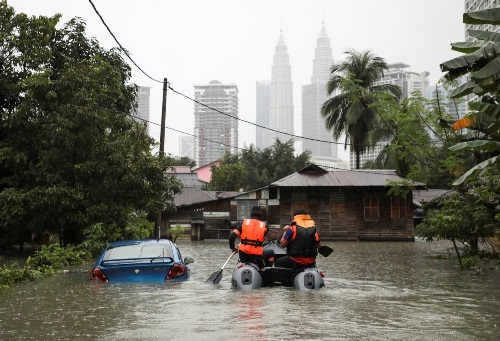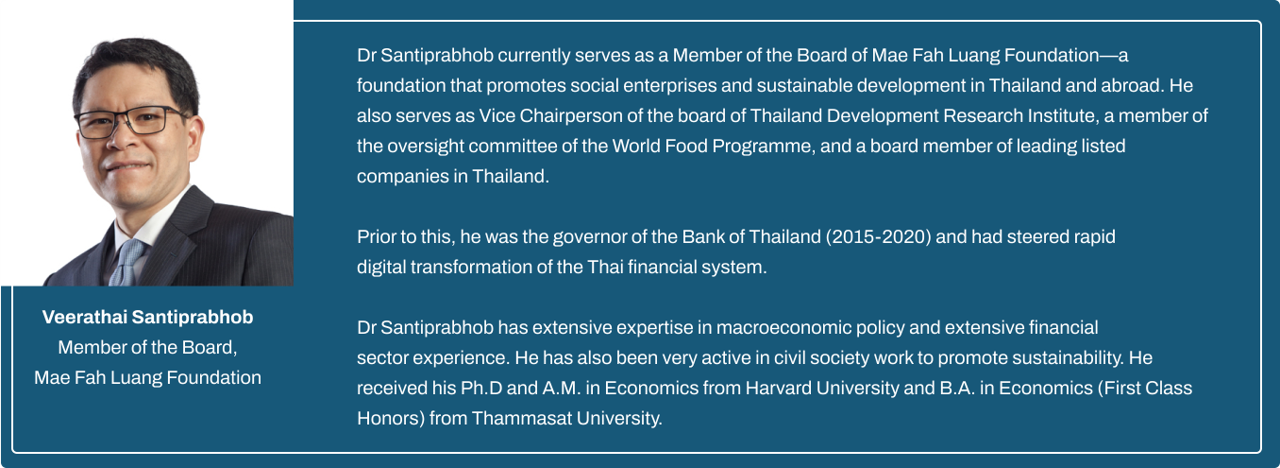
Years ago, if you had asked the average Malaysian about climate change, many would have struggled to explain what it actually meant. For most, it was a concept confined to school textbooks, taught in a technical and somewhat detached manner, as though it was a distant future concern, something that might happen somewhere else, but not here in Malaysia. Fast forward to today, and the phrase “climate change” has taken on a much more urgent and personal meaning. Thanks, or perhaps no thanks, to the recent string of extreme weather events, Malaysians are now learning firsthand what climate change truly entails.
Malaysia’s Climate Reality
While Malaysia often prides itself on being one of the least contributing nations to global greenhouse gas emissions, accounting for less than 0.7%, it’s becoming increasingly clear that climate change is about more than just emissions, it’s about the complex and interconnected impacts that are now part of our lived experience. From devastating floods to record-breaking heatwaves, the impacts are no longer theoretical but a daily reality. The mass coral bleaching event, intense El Niño, and a rise in heatwaves and floods, for instance. All these raise uncomfortable questions: Are we really prepared to handle the future we’re heading towards? More importantly, are we leveraging every tool at our disposal to mitigate these impacts before they spiral out of control?
Recently, there’s been a lot of buzz about green finance, and for good reason. It represents a way to funnel capital into projects that can help mitigate environmental damage and build resilience against climate impacts. Malaysia has made strides in this area, particularly with Bank Negara Malaysia’s Climate Change and Principle-based Taxonomy, which provides a framework for identifying and classifying green investments. This is a solid step towards greater transparency and accountability in the financial sector.
Bridging the Gap: Challenges and Solutions
The allure of green bonds and sustainable investments is undeniable, drawing the attention of institutional investors eager to align their portfolios with environmentally responsible projects. However, this growing interest contrasts sharply with the limited number of projects that meet the stringent criteria necessary to be considered truly “green.” The demand far outpaces the supply, creating a bottleneck in the flow of sustainable finance. This gap arises because developing a green project is no small feat, it demands not only a deep understanding of environmental impact and sustainability but also significant upfront investment in research, planning, and execution. These projects often involve advanced technologies, rigorous certification processes, and adherence to international standards, all of which require expertise that isn’t readily available. Furthermore, the higher upfront costs associated with these projects can be a deterrent for developers, who may opt for cheaper, less sustainable alternatives.
The challenge is further compounded by the fact that green finance is still a relatively new concept in many markets, including Malaysia. Financial institutions and project developers may lack the experience or the incentives to embark on green projects. Without a robust pipeline of eligible projects, the market for green bonds could stagnate, undermining the very goals of sustainability that it seeks to promote. To bridge this gap, it’s essential to factor in the opportunity cost when designing financial incentives. These incentives must not only be attractive enough to lure investors but also practical and accessible for developers. To make green finance work, policy interventions are necessary. This means crafting policies that reduce the financial barriers to entry, such as offering subsidies, grants, or low-interest loans specifically for green projects. Additionally, streamlining regulatory processes and providing technical assistance could lower the initial hurdles and encourage more developers to pursue green certifications. The Malaysian government has the authority to implement a suite of fiscal tools that can shift the economic landscape in favor of sustainability. For instance, introducing tax incentives for companies that invest in green technologies would make these innovations more economically viable, encouraging widespread adoption.
Pushing for Policy and Regulatory Reforms
Meanwhile, the concept of a carbon tax is gaining traction globally, and it’s something Malaysia should seriously consider. It could be an effective deterrent against pollution, making it more costly for companies to engage in environmentally harmful activities and the revenue generated from such a tax could be directed toward funding climate mitigation projects, enhancing the transition to cleaner energy sources, and improving public health through better air quality. While the implementation of a carbon tax presents challenges, including its potential regressive impact on low-income households and the need for effective enforcement mechanisms, it represents a proactive approach to achieving Malaysia's carbon neutrality target by 2050 and enhancing its competitiveness in the global market for sustainable practices
Young people, more than any generation before, are acutely aware of the climate crisis and demand that financial institutions prioritize the planet over short-term profits. This is especially important as SMEs, which accounted for more than 90% of overall business establishments in Malaysia in 2023 with more young people becoming part of these enterprises. Marginalized communities, those who live in flood-prone areas, suffer the most during heatwaves, and cannot afford to adapt to changing conditions. For them, climate change is a daily struggle. Tools like social impact bonds could be tailored to benefit these communities, ensuring that green finance reaches those who need it most.
Likewise, as we shift towards a greener economy, the idea of a “just transition” is crucial here and more importantly ensuring that the transition doesn’t leave anyone behind. This means investing in retraining programs for workers in carbon-intensive industries, supporting SMEs in adopting sustainable practices, and creating new jobs in the green economy. In regards to this, the ESG movement has gained momentum and Malaysia is starting to follow suit. Financial institutions are increasingly incorporating ESG criteria into their investment strategies, recognizing that companies with strong ESG practices often outperform their peers in the long run.
For ESG to truly transform the financial sector, Malaysian institutions need to move beyond the traditional risk management approach and start seeing ESG as a driver of innovation and value creation. This could involve embracing new business models that prioritize sustainability, investing in cutting-edge technologies to reduce environmental impact, and developing products and services that address the unique challenges posed by climate change. For example, leveraging advanced data analytics and AI in ESG reporting could improve transparency and help investors make more informed decisions.
And of course, let’s not forget about regulation. The Malaysian government needs to step up and create a regulatory environment that encourages, not just mandates ESG adoption. This could mean introducing mandatory ESG disclosures, offering incentives for early adopters, and developing standardized metrics that allow for consistency and comparability across the board. In a world where greenwashing is a real concern, having clear and enforceable standards is critical.
So, where do we go from here? To truly harness the potential of green finance and ESG principles, Malaysia needs to take decisive action and this includes strengthening policy frameworks by expanding the scope of green finance frameworks to cover more sectors, providing fiscal incentives like tax breaks for green investments, and developing a robust system for project verification. Besides, more public-private collaboration needs to be explored and fostered which means we also need to build trust in green finance and that starts with transparency. Rigorous monitoring and reporting mechanisms should be in place to track the impact of green finance initiatives and ensure that they deliver on their promises. This may also include considering the opportunity costs involved when designing incentives so financial tools are both attractive to investors and practical for broad implementation.
Towards a Just and Sustainable Future
In the midst of this, it’s also important that we move beyond the common blame game. Too often, the burden of addressing environmental issues is placed squarely on the shoulders of individual consumers. While personal responsibility and sustainable lifestyle choices are important, it’s time to acknowledge the elephant in the room, industries and businesses. These entities are responsible for emissions, pollutants, and waste on a scale that far surpasses anything individual consumers could produce. Yet, they often escape scrutiny while consumers are made to feel guilty for their choices. This disparity is not only unjust but also counterproductive.
Moreover, greenwashing has become rampant, with companies across various sectors, both globally and within Malaysia, making misleading claims about their environmental efforts. Despite the growing awareness of this issue, there is a glaring lack of regulation to address it. Without stringent rules and accountability, industries will continue to get away with these practices, undermining genuine efforts to combat climate change. The current financing structures must also be re-examined to ensure that equitable funding is available across sectors and regions, allowing every stakeholder to contribute effectively to the green transition.
As we look ahead, the question isn’t whether Malaysia will adapt, but whether we will lead, setting a new standard for what a sustainable, forward-thinking nation can achieve. The true test will be in our willingness to confront uncomfortable truths, hold industries accountable, and ensure that the benefits of a green economy are shared by all, especially those most vulnerable to climate impacts. The stakes are high, and the path forward demands bold choices that will determine not just our place in the world, but the legacy we leave for future generations.
Posted 27/08/2024

















